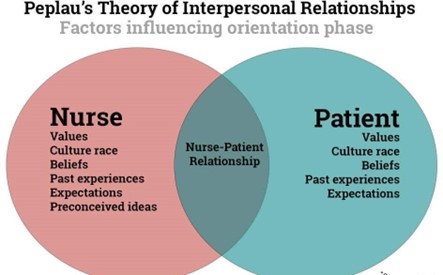A patient states, “I don’t know what the pills are for or why I am taking them, so I don’t want them.”
What therapeutic communication would help this patient?
Ask for what you need.
Giving information.
Silence.
Using general leads.
The Correct Answer is B
In this situation, the patient is expressing a lack of understanding and confusion about their medication. The therapeutic communication technique that would be most helpful is giving information, which involves providing the patient with accurate and clear information about their medication, its purpose, and the benefits of taking it.
Option a, "Ask for what you need," may not be effective in this situation because the patient has already expressed what they need, which is information about their medication.
Option c, "Silence," would not be helpful because the patient is seeking information and support.
Option d, "Using general leads," involves using open-ended statements or questions to encourage the patient to share more information, but it may not address the patient's primary concern of not understanding their medication.
Nursing Test Bank
Naxlex Comprehensive Predictor Exams
Related Questions
Correct Answer is B
Explanation
Hildegard Peplau was a nursing theorist who promoted the interpersonal theory between patient and nurse. She believed that nursing is a therapeutic, interpersonal process that involves the development of a close and personal relationship between the nurse and the patient. According to her theory, the nurse should understand the patient's needs, feelings, and behaviors to develop a personalized care plan that would facilitate the patient's recovery.
Mary Mahoney was a nurse who broke racial barriers and became the first African American registered nurse in the United States.
Hattie Bessment was a nurse who promoted nursing education and research.
Linda Richards was the first professionally trained nurse in the United States and established the first nursing school in Japan.
While these nurses contributed significantly to the nursing profession, they did not specifically promote the interpersonal theory between patient and nurse.

Correct Answer is D
Explanation
This response is empathetic and allows the client to express her feelings openly. It demonstrates active listening and validates the client's emotions.
Option A ("I know exactly how you feel") can come across as dismissive or assuming, and it may not accurately reflect the client's unique experience.
Option B ("Most people experience depressed feelings after a divorce") may also come across as dismissive and minimizes the client's feelings.
Option C ("Look on the bright side, you will be glad you divorced him in a couple of years") is not empathetic and does not acknowledge the client's current emotional state.
Whether you are a student looking to ace your exams or a practicing nurse seeking to enhance your expertise , our nursing education contents will empower you with the confidence and competence to make a difference in the lives of patients and become a respected leader in the healthcare field.
Visit Naxlex, invest in your future and unlock endless possibilities with our unparalleled nursing education contents today
Report Wrong Answer on the Current Question
Do you disagree with the answer? If yes, what is your expected answer? Explain.
Kindly be descriptive with the issue you are facing.
